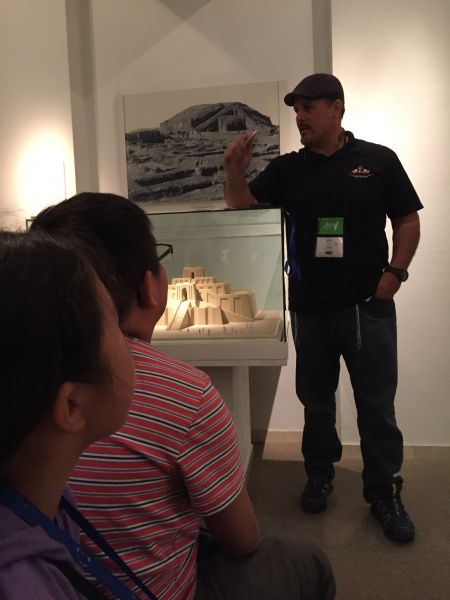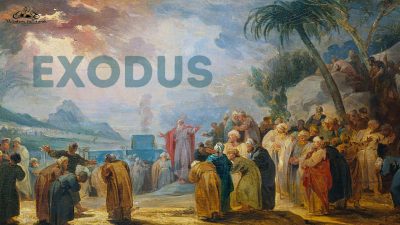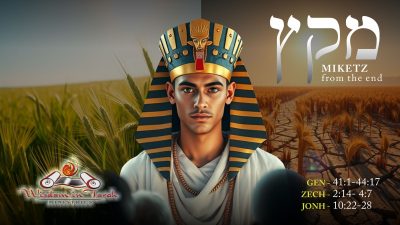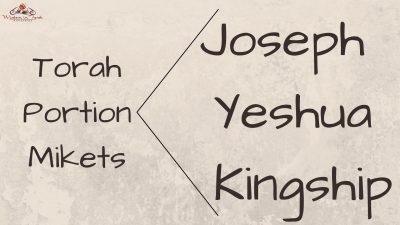2016 Israel Tour – Caesaria

Teaching at Caesaria. Be sure to check out the additional info tab!
Video
Audio
Resources
The following is a list of recommended resources for this teaching:
- More resources coming soon...
History of Caesaria: Click on PDF
PDF : caesarea
CAESAREA (PLACE) [Gk kaisareia (καισαρεια)]. A seaport located ca. 50 km N of Tel Aviv and ca. 45 km S of Haifa on the Mediterranean coast (M.R. 140212); also known as Caesarea Maritima or Caesarea Palestinae.
A. Caesarea’s History
For millennia before any permanent occuption occurred, the future site of Caesarea Maritima had been used as a roadstead for maritime trade between Egypt and the Levant. The founder of the first known settlement at the site was a Sidonian king named Strato, who lived during the 4th century b.c.e. His trading station came to be known as Strato’s Tower.
The original village may have been located ca. 300 m N of the subsequent Crusader fortifications. It probably included a small harbor, private houses, some official buildings, magazines for storage, and perhaps a lighthouse or watchtower that may have given the settlement its name. Adjacent to the fertile Plain of Sharon, the site provided an excellent maritime outlet for the agricultural abundance of the region.
In 259 b.c.e., when the region had passed under Ptolemaic control, an Egyptian official named Zeno arrived at the site to inspect the estates and manage the financial interests of his employer, Apollonius, and his king, Ptolemy Philadelphus. His visit, recorded in the so-called Zeno papyrus, provides the first mention of Strato’s Tower or of the site of Caesarea itself.
Near the end of the 2d century b.c.e., a petty ruler named Zoilus seized Strato’s Tower and the nearby city of Dor 12 km to the north. He transformed the coastal trading settlement into a fortified port city—a political imperative considering his tenuous hold on these coastal enclaves and the rise of the Hasmonean dynasty. In addition, he expanded his port’s harbor capacity by creating an artificial, protected anchorage in the lee (N) of the site’s highest promontory. This facility, which was literally carved from the coast and then flooded, augmented a harbor to the north that had served the original settlement. Both basins were now enclosed within the city walls, consistent with the tradition of harbor construction of the Hellenistic age.
Zoilus held Strato’s Tower until it was taken by Alexander Jannaeus in 103 b.c.e. Its fate after this date is not clear, although its fortunes clearly declined. It had fallen into a ruinous state by the time of Herod the Great (40–4 b.c.e.).
Having survived the tumultuous last years of the Roman civil wars, Herod continued as Rome’s client king of Judea. A successful meeting with Octavian (later Augustus Caesar) led to reconfirmation of his status and to a grant of additional territory which included the coastal region embracing the ruins of Strato’s Tower.
Herod decided to build a major international port in his newly acquired land to foster several policy goals. A grand city built in the style of a Roman provincial capital and named for his imperial patron would be a tangible demonstration of his loyalty and would manifest his commitment to the traditions of Rome. In addition, Herod, who was a Jew and who would eventually rebuild the Second Temple in Jerusalem, could show his sympathy and support for his non-Jewish subjects through the construction of a great Greco-Roman urban center complete with pagan temples and other structures (a theater, hippodrome, and amphitheater) that were inimical to his Jewish constituency. This ambitious building program was a gentile counterpoint to his rebuiding of the Jewish temple.
Herod’s dream for Caesarea had an economic dimension as well. He hoped that this port, with its great harbor complex called Sebastos, would challenge and perhaps supplant Alexandria as the great emporium of the eastern Mediterranean. Finally, the erection of such an elegant city from the ruins of Strato’s Tower would confirm Herod’s place in history as a great statesman and master builder. With so much at stake, work on the new city proceeded rapidly. In little more than a decade (ca. 22–10/9 b.c.e.), the city was completed and dedicated with spectacular games, with the Sebastos harbor complex finished perhaps a few years earlier. See Fig. CAE.01.
The primary source for Herodian Caesarea is the ancient historian Flavius Josephus (JW 1.408–14; Ant. 15.331–41). Although not a contemporary of the king, he knew Caesarea and its history well. We are fortunate to have not only his description of Herod’s city at its inception but also an account of the actual building of the Outer Basin of Sebastos as well—a literary description that is unique in ancient texts.
CAE.01. Artist’s reconstruction of Caesarea Maritima—Herodian Period. (Courtesy of R. Hohlfelder.)
From its inception, Caesarea contained all the principal architectural elements that distinguished contemporary pagan cities—a theater, temples, elaborate sewer and water systems, paved streets installed on the typical orthogonal urban design, etc.—plus some unique features as well. Josephus mentions that Herod erected a grand temple to Augustus and Roma that dominated the harbor and provided a monumental landmark for incoming ships. From archaeological data uncovered, we now know that it was constructed on an artificial podium adjacent to the earlier Inner Basin that itself had been refurbished, perhaps to serve as a limited-use royal harbor or a protected anchorage for Herod’s fleet.
Josephus’ description of the construction of the Outer Basin, long judged by many scholars as an exercise in inflated prose or even a conscious exaggeration, has been proven largely correct by recent underwater excavations. When completed, this facility was an engineering marvel of the age, incorporating such sophisticated and modern features as a siltation control system that used flushing channels, the extensive use of hydraulic concrete (a building substance that was poured liquid into the sea to harden in situ), and certain design elements to mitigate damage from wave energy.
This facility was but one element of the city’s elaborate harbor complex known as Sebastos, or Portus Augusti (as it is identified on coins from the Roman occuption of Caesarea). Sebastos consisted of four harbors: the Inner Basin and Outer Basin that were connected by a channel, the South Bay anchorage, and the North Harbor (the original Hellenistic facility restored by Herod). Each may have had a distinct purpose. Their total working area was far greater than the immediate economic needs of the city or the Plain of Sharon required. Herod clearly planned for his seaport to assume a premier role in the maritime affairs of the Roman world. Caesarea was intended to be a major transshipment point on the busy maritime trade routes leading to Rome from the east. Although his city never surpassed Alexandria, it did achieve an international prominence and importance commensurate with Herod’s dream.
Upon his death in 4 b.c.e., one of Herod’s surviving sons, Archelaus, received his throne. Archelaus was judged incompetent by Augustus and was removed from power in a.d. 6. His kingdom, including Caesarea, was then absorbed by the Romans into their empire, and the new province was henceforth known as Judea. Herod’s seaport became the new provincial capital. When Judea entered the empire, the Romans took a census in the country, directed from Caesarea, to determine tax liabilities. This was the same census recorded in Luke 2:2 (contrast Matt 2:1).
The city figured prominently in the history of the early Church as recorded in the book of Acts. Philip, a deacon in the Jerusalem church, first brought Christianity to Caesarea (Acts 8:4–40). Pontius Pilate, who presided at Jesus’ trial, governed Judea as prefect from this provincial capital. An important step toward fulfilling Christianity’s destiny as a world religion occurred at Caesarea when Peter there converted the first gentile, Cornelius the centurion (10:3–48). Paul, who earlier had been safely spirited away to Tarsus from Caesarea (9:29–30), was imprisoned for two years (a.d. 57–59) in Caesarea before being sent to Rome for trial (Acts 23–26). Although incarcerated, he was not isolated from the rest of the Christian community. Caesarea’s central position on the major maritime routes of the Roman Empire provided him with ample opportunity to continue his epistolary activities. Following these events, however, our knowledge of Caesarea’s Christian history dims until the 3d century.
Caesarea also played an important role in the First Jewish War (a.d. 66–70). Events in the city triggered the onset of hostilities. Nearly 20,000 Jews were slaughtered at Caesarea in one hour. Vespasian, then his son Titus (after Vespasian had been declared emperor of Rome at Caesarea by his legions), conducted the war from there. Over 10,000 soldiers were quartered in the city at one point in the war. When the war was over, Titus held victory games in the amphitheater. There 2500 Jewish prisoners of war were forced to fight to their deaths as gladiators. Vespasian honored Caesarea’s loyalty by refounding the city as a Roman colony, Colonia Prima Flavia Augusta Caesarea.
The emperor Hadrian, who visited the city at least once during his extensive imperial travels, patronized the city on a grand scale. Among the public works attributed to him are a new temple, a second aqueduct, and possibly the construction of a permanent stone hippodrome. Later emperors favored the city as well. New titles and honors accrued as time passed until the city achieved its most glorious (and ponderous!) recognition under Trebonianus Gallus (a.d. 251–53): Colonia Prima Flavia Augusta Felix Concordia Caesarea Metropolis Provinciae Syriae Palaestinae.
Throughout the centuries of Rome’s rule, the city prospered on many levels, enjoying the benefits of its role as provincial capital and busy international seaport. Its geopolitical importance, its local prosperity, and its cosmopolitan character as a leading Mediterranean seaport attracted numerous intellectuals and religious leaders. It evolved into one of the leading centers for religious study in the Roman world.
By the beginning of the 3d century, the Jewish population had recovered from the disasters of two wars with Rome (the second in a.d. 132–35) and had grown once again to a considerable size. Prominent rabbis, including Rabbi Hoshaya, Rabbi Abbahu, and Rabbi Isaac Hapaha, taught and issued legal decisions at Caesarea. Their contributions to both the Jerusalem and Babylonian Talmuds loom large. The scholar Origen came to Caesarea in a.d. 231 and almost single-handedly turned the city into a center of Christian learning. During the next two decades he amassed a huge library that attracted serious scholars and students. His efforts were continued by Pamphilus, who educated another generation of Christians at Caesarea.
During the great persecution of Christians (a.d. 303–13), numerous individuals died as martyrs for their faith at Caesarea. Eusebius of Caesarea wrote On the Martyrs of Palestine in 311 to describe their sufferings. Slightly earlier, he had written the Ecclesiastical History, the first history of the Christian Church. Both works were subsequently revised.
As the Byzantine era dawned with the personal conversion of Constantine and the subsequent Christianizing of the Roman world, Caesarea became an even more important Christian center. As a provincial capital (a role it continued to play during the Byzantine era as well), its bishop, bearing the additional title of metropolitan, exercised a leadership role in the Christian Holy Land. This prestige and influence enjoyed by Caesarea’s metropolitan bishops engendered a great rivalry with the bishops of Jerusalem until the issue was resolved in Jerusalem’s favor in a.d. 451.
The city became a regular stop on Christian pilgrimages to the Holy Land. Numerous imperial visitors, including St. Helena, mother of Constantine, and famous churchmen like St. Jerome, visited Caesarea during its Byzantine era. Jerome’s stay was prolonged because he took advantage of the city’s famous library.
The prosperity of the city ebbed and flowed during the 4th–7th centuries, reflecting both international and local conditions. Sometime in the late 4th century the city walls were extended to incorporate an expanded population and another aqueduct was constructed. Although its prosperity extended into the 5th century, Caesarea eventually declined, a victim of the general forces at work in that tumultuous century as well as of local drought and religious tensions.
Procopius of Gaza (not to be confused with Procopius of Caesarea, the famous historian of the era of Justinian [a.d. 527–65]), wrote of the restoration of the harbor under Anastasius (probably after a.d. 502) and the subsequent return of prosperity to the city and the region it served. In the reign of Justinian an ambitious rebuilding program was undertaken throughout Caesarea. It is quite likely that the city reached its greatest population during the last years of his reign. Perhaps as many as 150,000 people lived there, making this city one of the largest in the Mediterranean world.
With the dawn of the 7th century, Caesarea’s fortunes changed again. The city surrendered without major resistance to the Persians in 614 and was held by them until 627–28 when the emperor Heraclius destroyed the Persian Empire and recovered the occupied territories. Only six years later, the first Muslim army invaded Palestine. Caesarea was first attacked in 634. With its defenses revitalized by Heraclius and its ability to be resupplied by the sea, it withstood Arab attacks until 640 or 641. It only fell then because a Jew named Joseph led the Muslim besiegers into the city through a water “conduit,” either the Byzantine aqueduct (described by archaeologists as the low-level aqueduct) or a sewer.
Many inhabitants fled, contributing to Caesarea’s decline as a city. In addition, the geopolitical realities of the Mediterranean world changed with the Arab conquest. Caesarea no longer was on the major sea lanes of E–W trade. Its harbors, now allowed to decline because they were no longer required, served only local coastal trade. The economic ramifications were significant.
Caesarea survived, but as a less grand settlement. It lost its international and cosmopolitan urbanity and became an agricultural center on the fringes of a desert empire and a ribat, or coast guard station. It gained renown for its produce, its impregnable walls, its fountains, and its Great Mosque, constructed on the same podium where Herod’s temple to Augustus and Roma had stood centuries before.
The advent of the Crusades saw another shift of fortunes. Although not taken in the first military actions in the Holy Land, Caesarea soon thereafter came under Western control. In May 1101, Frankish knights under Baldwin I supported by a Genoese fleet assaulted and took the Arab city. One of the prizes of war was a green cut-glass chalice, found in the Great Mosque and thought to be the Holy Grail. It was taken by the Genoese to their city where it still forms part of the treasury of the Cathedral of San Lorenzo.
During the next two centuries the city retrenched again and became a fortified settlement of slightly more than 12 hectares. See Fig. CAE.02. Its history was tumultuous, as it changed hands several times during this period. The fortifications that distinguish the site today were completed in 1252. King Louis IX himself worked on these walls after his failed efforts to take Egypt in the Sixth Crusade. Ultimately, these Crusader fortifications proved insufficient: the Mamluk sultan Baybars, ruler of Egypt, took the city in 1265 after a siege of six days, and the defenders were allowed to evacuate the city. In 1291, as the Crusaders were finally expelled from the Holy Land, Caesarea, along with other coastal fortresses, was destroyed to prevent any Christians from ever again gaining a foothold in the Holy Land.
CAE.02. Site plan of Caesarea Maritima—Crusader Period. (Courtesy of R. Hohlfelder.)
From that point to the late 19th century, the site was abandoned. Nature reclaimed much of it, but ancient Caesarea was never forgotten. In 1882 a small village of Bosnian Muslims was settled within its ruins by the Ottoman Empire. A small settlement developed within the precinct of the old Crusader city and survived until the creation of the state of Israel in 1948. Kibbutz Sdot Yam was founded on the site in 1940. Since 1954 the Caesarea Development Corporation has built more than 400 homes on a tract of land NE of the Crusader fortifications. The Department of Antiquities and the National Parks Authority have actively encouraged tourism at this site by promoting excavations by various national and international expeditions and by restoring numerous archaeological monuments. Caesarea annually attracts large numbers of visitors from throughout the world.
B. Archaeology at Caesarea
Various travelers visited Caesarea before the 20th century and left impressionistic records of their observations. The first scientific account of the site, however, was not produced until 1873 by C. R. Conder and H. H. Kitchner, who spent six days exploring the ruins. Actual excavations did not commence until 1951 after agricultural workers from Kibbutz Sdot Yam uncovered an imperial porphyry statue on what is now called the Byzantine esplanade. S. Yeivin, then director of the Israeli Department of Antiquities, conducted that first exploration.
In the next two decades, various excavations were carried out. Beginning in 1959, the Missione Archeologica Italiana, under the direction of A. Calderini, succeeded by L. Crema and A. Frova, carried out six seasons of field work. Several of the site’s most important monuments—the aqueduct, the N wall of the Herodian or Hellenistic city, and the theater—were excavated by this team. Their final report was the first significant treatment of the archaeological evidence of Caesarea (Frova 1965).
In 1960, A. Negev and G. Foerster of Hebrew University, assisted by A. Wegman of Kibbutz Sdot Yam, began field work on behalf of the Israeli National Parks Authority. They excavated and restored the Crusader fortifications and many buildings within them. In 1960, one of the first underwater explorations of a submerged terrestrial site, in this case the ruins of the Outer Basin of Sebastos, was conducted by an American-Israeli team headed by E. A. Link. In 1962, M. Avi-Yonah, also of Hebrew University, excavated a synagogue located N of the Crusader fortifications and some adjacent structures.
In 1971, a consortium of universities and colleges known as the Joint Expedition to Caesarea Maritima (JECM), headed by R. J. Bull of Drew University, began field work at various sites in the ancient city. This group has worked at the site intermittently since then (Bull 1982; Bull et al. 1986). Another team from Hebrew University, directed by D. Bahat, E. Netzer, and L. Levine, excavated an important Byzantine building within the N sector of the Crusader fortifications and explored the promontory where Professor Netzer thinks Herod the Great’s palace was located (see Levine 1975a; 1975b; Levine and Netzer 1986).
In 1980, another international consortium was formed to carry out maritime excavations at Caesarea. This group, known as the Caesarea Ancient Harbour Excavation Project (CAHEP), is headed by A. Raban of the University of Haifa and codirected by R. L. Hohlfelder of the University of Colorado, R. L. Vann of the University of Maryland, and R. Stieglitz of Rutgers University, Newark. (J. P. Oleson of Victoria University was a codirector until 1985.) CAHEP resumed Link’s underwater explorations and began investigating various coastal structures relating to the ancient harbors of Caesarea (see bibliography).
Despite the considerable archaeological effort since 1951, only a small part of Caesarea has been explored. At this writing, JECM has completed its last season of field work and will continue to work on final publication of its explorations. CAHEP is continuing its marine archaeological investigations. In 1989 a new land archaeological team, the Caesarea Land Excavation Project (CLEP), began field work on the temple podium and on the Byzantine fortifications. This consortium, headed by Professor K. G. Holum, plans to conduct field work in these and other areas of the city. In June 1989 the Israel Antiquities Authority announced that it would accelerate its efforts to excavate and restore Herod’s city.
Bibliography
Blakely, J. A. 1987. The Joint Expedition to Caesarea Maritima Excavation Reports Vol. 4. Lewiston, NY.
Bull, R. J. 1982. Caesarea Maritima—The Search for Herod’s City. BARev 8/3: 24–40.
Bull, R. J., et al. 1986. The Joint Expedition to Caesarea Maritima: Ninth Season, 1980. BASORSup 24: 31–55.
Frova, A., et al. 1965. Scavi di Caesarea Maritima. Milan.
Hohlfelder, R. L. 1981. Coin Finds: A Conspectus. BASOR 244: 46–51.
———. 1982. Caesarea beneath the Sea. BARev 8/3: 43–47.
———. 1983a. The Caesarea Coastline Before Herod: Some Preliminary Observations. BASOR 252: 67–68.
———. 1983b. Caesarea Maritima. AJA 87/2: 191–92.
———. 1984a. Caesarea Maritima in Late Antiquity: An Introduction to the Numismatic Evidence. Pp. 261–85 in Ancient Coins of the Graeco-Roman World, ed. W. Heckel and R. Sullivan. Waterloo, Ontario.
———. 1984b. Caesarea Maritima. AJA 88/2: 225–26.
———. 1985. Byzantine Coin Finds from the Sea: A Glimpse of Caesarea Maritima’s Later History. Pp. 179–84 in Harbour Archaeology. B.A.R. International Series 257. Ed. A. Raban. Oxford.
———. 1987. Herod the Great’s City on the Sea. National Geographic 171/2: 260–79.
———. 1989. Caesarea Maritima, Israel. Pp. 132–36 in International Perspective on Cultural Parks. Mesa Verde, CO.
Hohlfelder, R. L., and Oleson, J. P. 1980. Sebastos, the Harbor Complex of Caesarea Maritima, Israel: The Preliminary Report of the 1978 Underwater Explorations. Pp. 765–79 in Oceanography: The Past, ed. M. Sears and D. Merriman. New York.
Hohlfelder, R. L., et al. 1983. Sebastos Herod’s Harbor at Caesarea Maritima. BA 46/3: 133–43.
Holum, K. G.; Hohlfelder, R. L.; Bull, R. J.; and Raban, A. 1988. King Herod’s Dream—Caesarea on the Sea. New York.
Levine, L. 1975a. Caesarea under Roman Rule. Leiden.
———. 1975b. Roman Caesarea: An Archaeological-Topographical Study. Qedem 2. Jerusalem.
Levine, L., and Netzer, E. 1986. Excavations at Caesarea Maritima 1975, 1976, 1979—Final Report. Qedem 21. Jerusalem.
Negev, A. 1963. The Palimpsest of Caesarea Maritima. London Illustrated News. 2 November, 728–31.
Oleson, J. P. 1984. The Caesarea Ancient Harbor Excavation Project (C.A.H.E.P.)—May 21–June 30, 1984. Old World Archaeology Newsletter 13/2: 9–11.
———. 1985. Herod and Vitruvius: Preliminary Thoughts on Harbour Engineering at Sebastos, the Harbour of Caesarea Maritima. Pp. 165–72 in Harbour Archaeology. B.A.R. International Series 257. Ed. Raban. Oxford.
Oleson, J. P., et al. 1984. The Caesarea Ancient Harbor Excavation Project (C.A.H.E.P.): Preliminary Report on the 1980–1983 Seasons. JFA 11: 281–305.
Raban, A. 1984a. Caesarea Maritima, 1984. RB 91/2: 246–52.
———. 1984b. Caesarea Harbor Excavation Project, 1984. IEJ 34: 274–76.
———. 1985a. Marine Archaeology in Israel. Oceanus 28/1: 59–65.
———. 1985b. Caesarea Maritima 1983–1984. International Journal of Nautical Archaeology 14/1: 155–77.
———. 1989. The Harbours of Caesarea Maritima. Vol. l. BAR International Series 491. Oxford.
Raban, A., and Hohlfelder, R. L. 1981. The Ancient Harbors of Caesarea Maritima. Arch 34/2: 56–60.
Ringel, J. 1975. Césarée de Palestine. Paris.
Roller, D. 1982a. The Wilfred Laurier University Survey of Northeastern Caesarea Maritima. Levant 14: 90–103.
———. 1982b. The Northern Plain of Sharon in the Hellenistic Period. BASOR 247: 43–52.
———. 1983. The Problem of the Location of Straton’s Tower. BASOR 252: 61–66.
Vann, R. L. 1983. News from the Field: Herod’s Harbor Construction Recovered Underwater. BARev 9/3: 10–14.
ca. circa (about, approximately)
Fig. figure
JW Josephus, The Jewish War (= Bellum Judaicum)
Ant. Josephus, Jewish Antiquities (= Antiquitates Judaicae)
3d third
3d third
E east (ern); or “Elohist” source
W west (ern)
Fig. figure
NE northeast (ern)
N north (ern)
N north (ern)
N north (ern)
BARev Biblical Archaeology Review
BASORSup BASOR Supplement
BASOR Bulletin of the American Schools of Oriental Research
BARev Biblical Archaeology Review
BASOR Bulletin of the American Schools of Oriental Research
[/vc_column_text][/vc_tta_section][vc_tta_section title=”Caesaria by the sea:” tab_id=”1479936213228-7c48cff1-7171″][vc_column_text]
CORNELIUS (PERSON) [Gk Kornēlios (Κορνηλιος)]. According to the book of Acts, Cornelius is the first gentile to become a convert to the way (Acts 10:1–11:18, cf. 15:6–11). Although the episode occupies a significant place in Luke-Acts, Luke conveys little information about the man himself. Study of the episode has concentrated primarily on the historical development and literary composition of the narrative and its significance in the unfolding story of Luke-Acts.
At the beginning of the Cornelius narrative, Luke notes that Cornelius resides in Caesarea and describes him as “a centurion of what was known as the Italian Cohort, a devout man who feared God with all his household, gave alms liberally to the people, and prayed constantly to God” (10:1–2). This introduction identifies Cornelius in two important ways. First, that he is a gentile may be deduced from the fact that he is a Roman soldier, since being in the military was incompatible with the observance of Jewish law (Joseph. Ant 18.84).
Second, with several phrases Luke signals that Cornelius is a religious man. Together with his entire household (cf. 11:14) Cornelius fears God. Whether this statement means that Cornelius belongs to a distinct group of gentiles known as “God-fearers,” (i.e., gentiles who worshipped the God of the Jews but did not become proselytes) is a matter of debate. What is not subject to debate is the positive connotation attached to this statement and the ones that follow. Cornelius is charitable toward “the people” (Gk laos), a term Luke often employs for the people of Israel; and he prays to God without ceasing. While Cornelius is a gentile, Luke takes care to introduce him as an exceptionally good and pious gentile whose conversion almost becomes a response to his behavior. Indeed, the angel who appears to him and instructs him to send for Peter says that Cornelius’ behavior has become a memorial before God (Acts 10:4).
Since Martin Dibelius’ essay (1956) on the Cornelius account, interpretation of this episode has revolved around his thesis that the story has its origin in an earlier and simpler story of conversion, such as Dibelius understood had been preserved in the story of the ETHIOPIAN EUNUCH. Dibelius argued that the following elements conflicted with this earlier version of the story and, hence, that they were later additions: (1) Peter’s vision (10:9–16) does not appear to be connected with the surrounding narrative, since the vision has to do with food laws but the larger story focuses on the inclusion of gentiles; (2) the description of the arrival of Peter and his colleagues at Cornelius’ home (10:27–29), which is literarily awkward; (3) Peter’s speech (10:34–43) appears to be a later addition because, according to Dibelius, early conversion stories did not contain speeches and because this particular speech seems to have been modeled on Peter’s other speeches; and (4) Peter’s defense of his actions in Jerusalem (11:1–18), since it focuses on Peter’s social relations with gentiles, which Dibelius finds to be insignificant in the story itself.
Following Dibelius’ essay, other interpreters of the Cornelius episode sought to refine his thesis. For example, while Ernst Haenchen (1965) expressed doubts about Dibelius’ assumption that the early Church preserved legends about conversions (a criticism more recently revived by Klaus Haacker [1980]), Haenchen’s own suggestion was that Luke had received the Cornelius story, in the form Dibelius had suggested, from traditions preserved at Caesarea. Ulrich Wilckens (1958) examined Peter’s speech in 10:34–43, contending that this speech is more catechetical than Peter’s other speeches in Acts, which are kerygmatic in content. François Bovon (1970) connected Peter’s vision (10:9–16) with the Jerusalem discussion in 11:1–18 and argued that together they suggest that within the Cornelius account a second motif pertains to food laws. Karl Löning (1974) has argued that Peter’s vision is an integral part of the Cornelius story, even in its earlier forms.
Despite Löning’s attempt, the feature of Dibelius’ analysis which has been most widely accepted is almost certainly his claim that Peter’s vision is extrinsic to the narrative and is, hence, an addition to an earlier and simpler account. However, Dibelius neglected two features of ancient narratives that undermine his argument. First, numerous narratives in the ancient world use the device of double dreams, that is, two characters have separate dreams within one narrative episode (see, for example, Jos. Ant 11.321–39). The closest example, of course, occurs in Acts 9, where Saul and Ananias each have a vision concerning the eventual visit of Ananias to Saul. Thus, there is good reason to suspect that the two visions in Acts 10 also belong to the same narrative. The second narrative feature Dibelius neglected is the literary role of dreams or visions. Dibelius found the vision of Peter insufficiently related to the larger narrative, but that is to overlook the fact that dreams or visions often occur at the beginning of an episode, but their significance only unfolds as the story itself unfolds. For example, in Plutarch’s treatment of the life of Cicero, he tells of a dream in which Cicero sees Octavius, whom he had actually never met; on the next day, however, Cicero does meet Octavius (Cic. 44; cf. Cim. 18; Luc. 10.23.3–4; Brut. 20.8–11). Similarly, in Achilles Tatius’ story of Leucippe and Clitophon, one of the Hellenistic romances, Clitophon dreams that he has been attached to a wife and then the attachment is severed by someone else. When Clitophon’s engagement to Calligone is broken, the dream is fulfilled, and it is fulfilled yet again when Clitophon is separated from Leucippe by a series of misadventures. Numerous such examples suggest that, while Peter’s vision does not explicitly address the conversion of gentiles, it may nevertheless be an integral part of the narrative.
The literary structure of the Cornelius account, when read as a unified story, consists of a sequence of parallel scenes: (1a) the vision of Cornelius, in which he receives instructions concerning Peter (10:1–8); (1b) the vision of Peter, in which he receives instructions concerning Cornelius (10:9–16); (2a) Cornelius’ agents arrive at Peter’s house and are welcomed there (10:17–23a); (2b) Peter and his companions arrive at Cornelius’ house and are welcomed there (10:23b–29); (3a) Cornelius speaks to explain the events that have occurred to him (10:30–33); (3b) Peter speaks to explain his insight about God’s impartiality and to recount the gospel (10:34–43); (4a) God’s impartiality is confirmed by the Holy Spirit and through baptism (10:44–48); (4b) God’s impartiality is confirmed by the community gathered in Jerusalem (11:1–18).
Luke narrates this particular story in a careful and even dramatic manner, at least in part because it is a major turning point in his story of the early Church. Beginning in Acts 1:8 (or even Luke 2:32), Luke has laid the groundwork for the inclusion of gentiles within the Christian community. Initially preaching the gospel only within Jerusalem, believers leave Jerusalem when they are forced to do so because of persecution (8:1). With the conversions in Samaria, the conversion of the Ethiopian eunuch, and the conversion of the archenemy Saul, Luke continues to widen the boundaries of the Christian community. The similarities in the stories of the Ethiopian, Saul, and Cornelius suggest that for Luke they are part of one continuous event.
Not only does the Cornelius account bring to a culmination much of Luke’s story up to this point, but it paves the way for the Jerusalem council in Acts 15. There, during a debate about the restrictions that ought to be placed upon gentile Christians, Peter refers indirectly to the Cornelius episode (15:6–9). The agreement that then becomes the launching pad for Paul’s continued mission among gentiles has as its starting point this conversion of a pious gentile.
By means of this carefully crafted story, Luke conveys several points that are indicative of his theological perspective. Most obvious among these is the understanding that it is God and God alone who determines what the boundaries of the Christian community are to be. In the face of Peter’s threefold resistance to the vision (10:9–16) and the Jerusalem community’s complaining when Peter joins in table fellowship with gentiles (11:3), God’s will has its way. In multiple ways Luke insists that this inclusion is God’s will: the vision of Cornelius, the repeated vision of Peter, the gift of the Holy Spirit prior to baptism with water. The conclusion is clear: the inclusion of gentiles was the direct result of God’s intervention and was not a merely human act. Despite the reluctance with which Peter becomes the instrument of Cornelius’ conversion, his role in this story also conveys an important element in Luke’s theological viewpoint. In keeping with the central importance Peter has in the Jerusalem community from the beginning of Acts, he alone is the apostle who has the authority to take this bold step. A third theological issue in this text has to do with the nature of Christian hospitality. Crucial to the Church’s inclusion of gentiles is the problem of table fellowship. That is an explicit issue, of course, in Gal 2:12, but it also plays a role in this story with its recurrent motif of hospitality and the sharing of food (10:23, 28, 48; 11:3).
Bibliography
Bovon, F. 1970. Tradition et redaction en Actes 10, 1–11, 18. TZ 26: 22–45.
Dibelius, M. 1956. The Conversion of Cornelius. Pp. 109–22 in Studies in the Acts of the Apostles. New York.
Gaventa, B. R. 1986. From Darkness to Light: Aspects of Conversion in the New Testament. Philadelphia.
Haacker, K. 1980. Dibelius und Cornelius: Ein Beispiel formgeschichtlicher Überlieferungskritik. BZ 24: 234–51.
Haenchen, E. 1965. The Acts of the Apostles. 14th ed. Philadelphia.
Löning, K. 1974. Die Korneliustradition. BZ 18: 1–19.
Wilckens, U. 1958. Kerygma und Evangelium bei Lukas. ZNW 49: 223–37.
Beverly Roberts Gaventa
Joseph. Josephus
Ant Josephus, Jewish Antiquities (= Antiquitates Judaicae)
Jos. Josephus
Ant Josephus, Jewish Antiquities (= Antiquitates Judaicae)
TZ Theologische Zeitschrift, Basel, Switzerland
BZ Biblische Zeitschrift, Paderborn
BZ Biblische Zeitschrift, Paderborn
ZNW Zeitschrift für die neutestamentliche Wissenschaft
Beverly Roberts Gaventa Professor of NT, Columbia Theological Seminary, Decatur, GA
Gaventa, B. R. (1992). Cornelius (Person). In D. N. Freedman (Ed.), The Anchor Yale Bible Dictionary (Vol. 1, pp. 1154–1156). New York: Doubleday.






